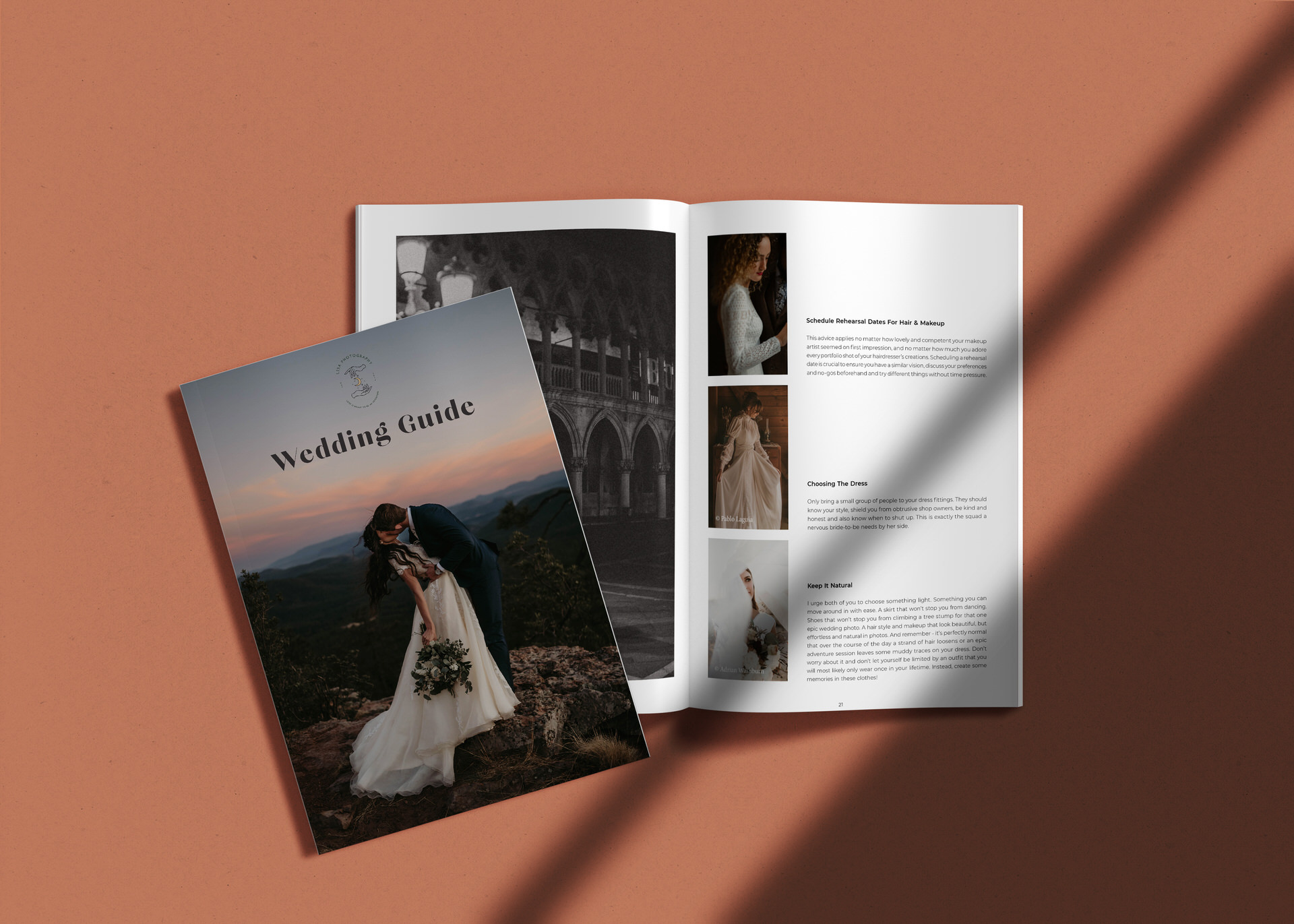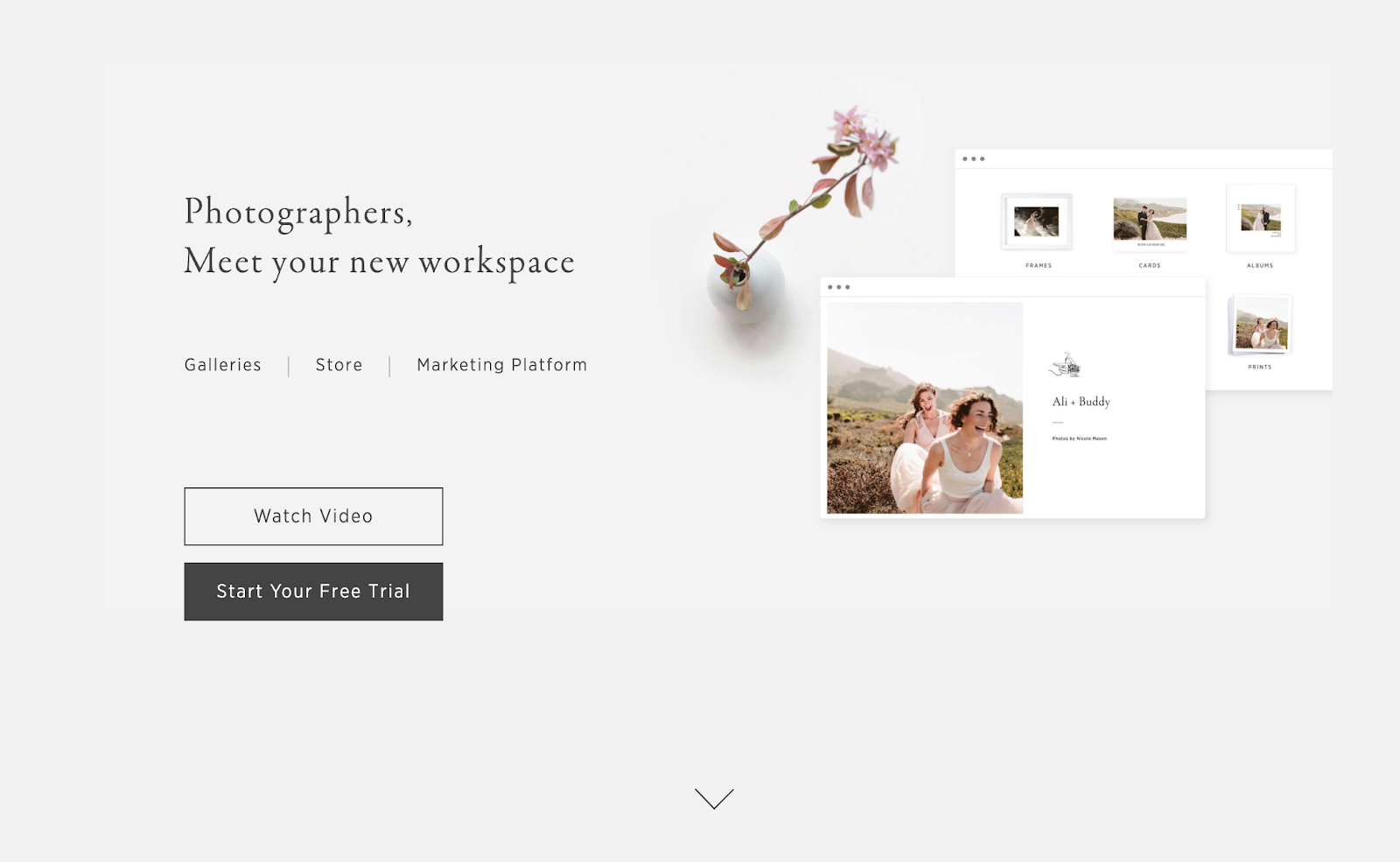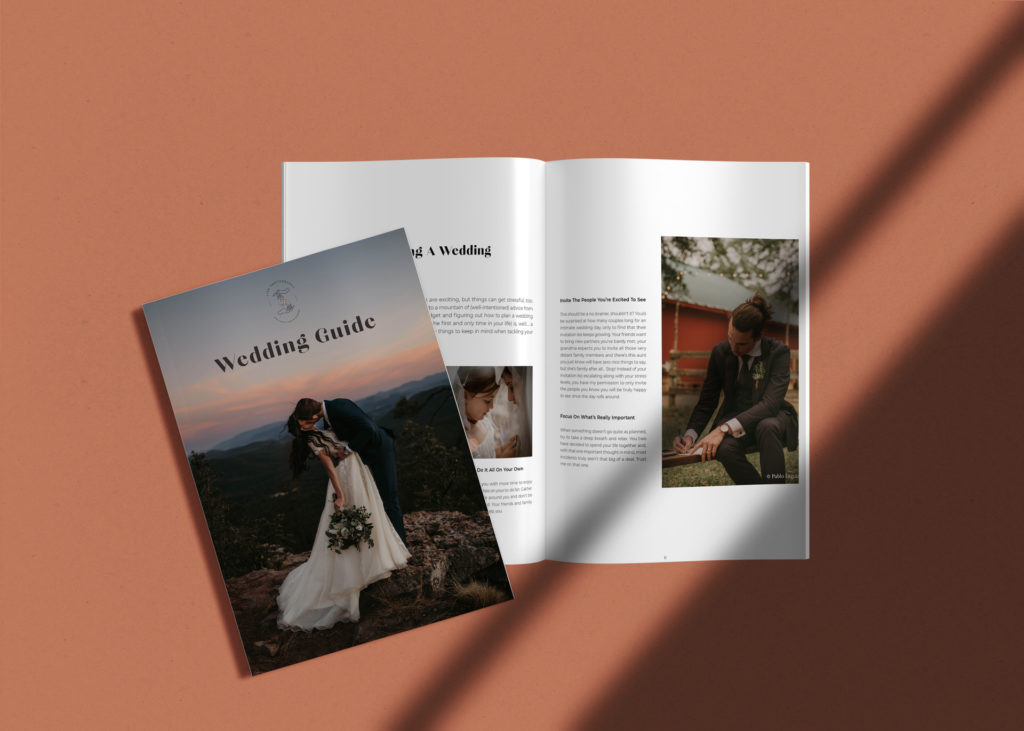As a wedding photographer, showing off your work online is an absolute must — and to do that effectively, an online portfolio is essential.
Whether it’s on your own website, social media, or a photo-sharing platform, an online portfolio offers you the chance to highlight your best work, prove your talents, and win over new clients.
But building an online portfolio isn’t always easy.
In fact, it’s a task that’s filled with a whole load of challenges and potential pitfalls that are super easy to fall into.
To get you on the right track, we want to highlight the most common mistakes that so many wedding photographers make.
So, let’s get started.
Mistake #1 — Your portfolio doesn’t express who you are, what your niche is, and what your brand is all about
The fact is, there are thousands of wedding photographers out there, all of whom will have very similar skills. Most of them can take great photos, and most of them will be fairly priced. But here’s the thing… none of them are you.
And that right there is what your portfolio should be shining a light on — you, your brand, and what makes it so special.
In a nutshell, your portfolio should make clear who you are, what your style is, what niche you are in, and what kinds of shoots you prefer to work on. Together, all of this will help to target your ideal client, and in turn, generate new leads.
So, first things first — ask yourself, “what kind of wedding photographer am I, and does my portfolio show that off?”
The answer to that question will depend on the uniqueness, continuity and specificity of the shots included in your portfolio, as well as how it’s designed and presented.
Ultimately, your portfolio needs to be clear about:
- Your niche: does it include consistent shots of similar wedding types? ⛪️
- Your style: does it showcase your signature style that’s unique to you? 🙋♀️
- Your brand: does it visually highlight your brand and what you care about? 🎨
- Your ideal client: does it feature the kind of couples you want to work with? 👰🏼
Tick those boxes, and your portfolio will help you stand out from the crowd and target clients that are on the hunt for a photographer just like you.
Mistake #2 — Your portfolio tries to cater for everyone
In line with focusing on what makes you different, there’s no use in watering down your portfolio and trying to appeal to everyone. In doing so, you’ll be totally diluting your brand and failing to attract the clients it exists for.
The underlying point here is that, again, specificity in an online portfolio is key — both in terms of your brand and who it tries to target.
If, for example, you’re an elopement photographer but your portfolio includes the occasional shot of a traditional church wedding, your intended clientele (elopers) might choose to search for a photographer who focuses exclusively on elopements instead.
Why?
Because specificity sells.
Couples want photographers who know what they’re doing and have a very clear style and vision that ties into their own.
Create a portfolio that’s generic and you’ll fail to match that all-important criteria.
So, remember who you are and who your audience is, and curate a portfolio that unashamedly targets it.
Mistake #3 — You’re not prioritizing inclusivity
At the same time of targeting a specific clientele, you don’t want to forget the need for inclusivity. After all, any couple that matches your niche should feel welcomed and encouraged by your portfolio, no matter their background.
It’s important, then, to make sure that your portfolio doesn’t lose sight of diversity in it’s hunt for specificity.
This means including all kinds of couples in your portfolio — particularly BIPOC and LGBTQ+ couples who can often feel excluded in an industry that’s dominated by unconscious stereotypes and ‘traditions’.
Inclusivity also comes down to making sure that your portfolio isn’t indirectly offensive or ignorant to the lived experiences of minorities.
If, for example, you’re a photographer in the South, you should be extra careful to make sure that your portfolio doesn’t include shots from old slave plantations that have since become wedding venues. Mistakes like these could quickly ostracize diverse clients and damage your reputation in the process.
Mistake #4 — You’re forgetting to tell a story
A huge part of a wedding photographer’s job is to tell the story of a couple’s wedding day — and, of course, this primarily comes down to capturing that story in photos, but your online portfolio should also bring it to life in words.
This means writing beautiful and engaging descriptions that describe the shots in your portfolios and what they capture. This will show potential couples the context of your shots and the approach you take to curating your selection of photos.
You may also choose to divide your portfolio into the different couples you’ve worked with and include shots that visually (and descriptively) tell the story and journey of their wedding days. This will not only demonstrate that you pay attention to your clients and what makes their stories and relationships special, but also highlight your ability to capture the key moments of a wedding day and make them last forever.

Photographer: Elsa Eileen Photography
Mistake #5 — Your portfolio simply isn’t big enough
To tell a story, however, your portfolio needs to include enough shots.
This is also essential to showcasing your full and consistent abilities — arguably the most important sign potential clients will be looking for.
There’s no right or wrong when it comes to the length or size of a portfolio, but you’ll want to strike a balance between over and underwhelming your audience.
A good framework to go by is to ask yourself whether your portfolio covers everything a potential client will want to see, which would usually include:
- Pre-wedding preparation 💄
- The journey to the venue 🎠
- The ceremony itself 💍
- Shots of the venue ⛪️
- Group shots 👭👫
- Couple shots 💑
- Shots of the after-party 🎉
This, of course, will vary depending on your niche.
An elopement photographer, for example, will need to showcase a less traditional approach that’s more intimate and stripped back.
Mistake #6 — You’re not fully optimizing your online portfolio
Now we’ve touched on the content of your portfolio, we want to end by talking about a more technical mistake that could be holding you back — and that’s your approach to SEO.
Put simply, search engine optimization is about boosting your website’s ranking on search engines by taking steps that matter to their algorithms.
Google, for example, has sophisticated bots that crawl every single website in search for treasure that tells it the purpose of a website, how good it is, and who, specifically, might want to visit it.
The ‘treasure’ search engines hunt for include things like:
- Fast loading speed 🏎
- Keywords 📝
- Mobile friendliness 📱
- Backlinks from other websites 🔗
- Meta descriptions 🖥
But what has any of this got to do with your online portfolio, exactly?
Well, poor SEO on your online portfolio site could be seriously limiting its ability to reach and engage visitors, even if it’s filled with stellar shots.
To avoid this, photographers should make sure that their online portfolio is fully optimized and ready to be sent to the top of the search results 📈
But how?
1. Don’t include large images!
Large images are a nightmare for SEO — they’ll slow down your site’s loading speed and turn visitors away in the process.
If visitors are quick to exit your online portfolio, search engines will actively downgrade your website and begin to decrease its visibility in the search results.
To stop that from happening, use an image resizer tool (like our favorite, JPEGmini) and you’ll be able to avoid slow loading speeds while retaining the quality of your shots.
2. Take advantage of metadata
Every website’s backend will have fields for ‘metadata’ in the form of alt text, meta titles and meta descriptions that tell search engines what an image is and why it might be relevant to a particular searcher.
Understanding these, and using them correctly, is a great way of boosting your portfolio SEO and attracting more visitors as a result.
So, for every image uploaded to your online portfolio, make sure to add alt text (a very short description of what the image is), a meta title (for example, ‘elopement wedding photo’) and a meta description that describes the image in a little more detail.
3. Optimize for mobile visitors
Making sure that your website’s portfolio looks just as great on a cell phone as it does on a laptop is super important. This is something all search engines prioritize and will be essential to reaching couples who might not always be in front of a computer screen.
Thankfully, mobile optimization is as easy as clicking a button — literally! You’ll find it in your dashboard, depending on the platform you’re using. You might have to move a few images around, but it’ll seriously be worth the effort.
4. Try to secure some backlinks
In a nutshell, backlinks are when another website links to a page on yours. This shows search engines that your website is trusted and relevant, which will boost its chances of ranking high for particular searches.
Reach out to any wedding vendor friends you have and ask them if they’d consider linking to your portfolio site, in return for the same. This would be a great way of reaching a new audience, as well as earning some SEO brownie points.
But what if your online portfolio is on an external platform, and not your own site?
Don’t worry — all of this still applies to online portfolio platforms where things like metadata and image size play an equally as important role in the level of traction and success a profile receives.
Even Instagram — which is, essentially, a search engine for images — has its own ‘SEO’ hacks, such as using the right hashtags and descriptions.
So, even if you don’t have your own personal portfolio site, don’t forget the importance of optimizing your accounts on whatever platforms you use. In a sea of other users, you’ll really have to stand out; and SEO is your secret weapon to do just that.
The perfect portfolio awaits… (well, almost!)
Avoid these common mistakes, and your online portfolio will be fit to show off your talents and bring in new business. Just remember, though, that the ‘perfect portfolio’ is never finished and will require constant fine-tuning in line with your most recent work.
But that’s the beauty of an online portfolio — it’s your ever-evolving platform to track your success and share your brilliance with the world!
So, start updating your online portfolio today, and don’t forget to head over to our blog for more top tips on running your wedding photography business.
Connection is what it’s all about. Feel free to reach out to us with any comments or questions you might have, even if it’s only to say hello. If it wasn’t for our beautiful community, this place just wouldn’t feel the same.




 -->
-->








0 Comments